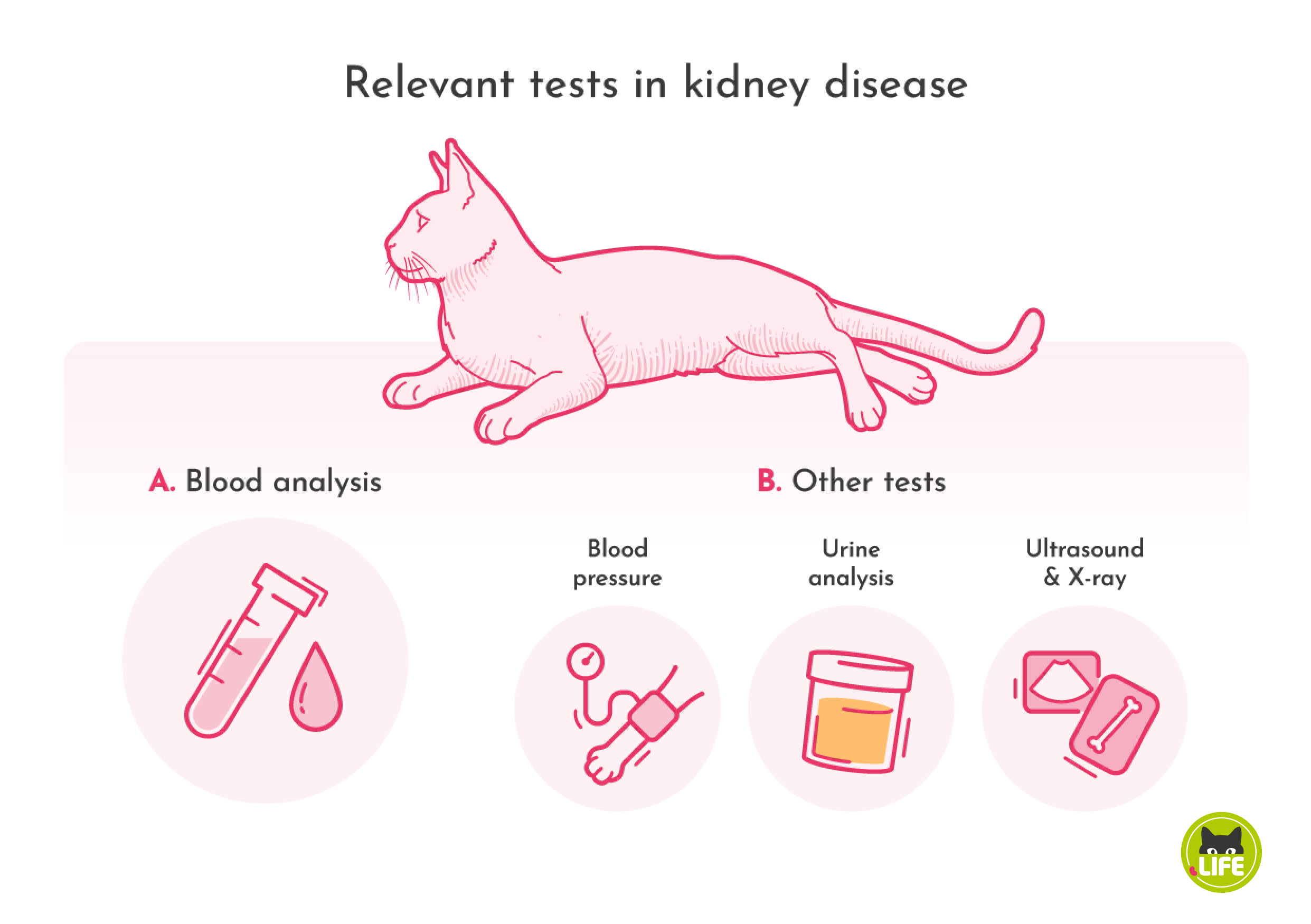
Diagnosis of CKD
CKD diagnosis is based on three diagnostic methods: clinical examination, laboratory analysis of blood and urine, and imaging techniques such as X-rays and ultrasound. Diagnosis is based on the cumulative findings of all techniques.
The International Renal Interest Society (IRIS) publishes guidelines for classifying chronic kidney disease (CKD) into four stages. These precisely define which parameters should be determined and which parameters are indicative of particular stages (“staging= Classification of the cat into a stage of chronic kidney disease according to IRIS...” is classification of an affected cat into a specific CKD stage on the basis of the given criteria). Blood pressure and proteinuriaIncreased protein in urine, leading to loss of protein. Normally, only a very small amount of protein is excreted in the urine. In chronic kidney disease, the amount lost may increase. High blood pressure damages blood vessels in the nephrons making them more permeable and... are also taken into account. The most important factors for classification are the level of creatinineCreatinine is a breakdown product of muscle metabolism. Its blood level is dependent, among many factors, on age, weight, nutritional status and muscle mass. Hence, creatinine levels in the blood vary from individual to individual. Creatinine is continuously excreted in the urine. Increased blood creatinine... in the blood and the “SDMASDMA = Symmetrical Dimethylarginine, which is a degradation product of the amino acid arginine and is excreted solely through the kidneys. SDMA is a highly specific biomarker for kidney function in cats. Read more: SDMA test (blood test)... test” (→ see Blood tests). To date, the most important criterion for CKD evaluation has been the level of creatinine in the blood. Levels of ureaUrea is the nitrogen-containing breakdown product of protein metabolism. The nitrogen from the proteins is converted to ammonia in the liver, which is combined with carbon dioxide to form urea. This is continuously excreted via the kidneys but also via sweat. Urea is one of... and phosphate in the blood are also important in CKD diagnosis.

1. Clinical examination
Cats are examined to determine their general condition, age, sex, breed, pre-existing conditions, medication and acute health problems. Their temperature is then measured, the visible mucous membranes are examined for paleness and they are examined for dehydrationA deficit of total body water. Dehydration can be caused by excessive fluid loss, for instance via the kidneys in CKD, or by insufficient fluid intake...., emaciation, bad breath and eye health. Usually the vet will also feel for their kidneys (kidney palpationUsing touch to check sites and organs of an animal’s body to diagnose disease. Palpation is part on a clinical examination....) and examine them for pain, size and palpable superficial changes. Symptoms are the main focus.
2. Laboratory tests
2.1 Blood tests to diagnose CKD
- Creatinine
- SDMA test
- Urea
- Phosphate
2.2 Urine analyses
- Specific gravity (SG) of urine
- Urinary protein levels (UPC)
2.3 Further blood tests
- Calcium
- Calcium and sodium
- ErythrocytesErythrocytes are red blood cells and contain the blood pigment haemoglobin. Red blood cells are responsible for transporting oxygen from the lungs into the cells of the tissues. They are predominantly produced in the bone marrow of larger bones.... and haematocrit
- Glomerular filtration rateThe glomerular filtration rate (GFR) is defined as the volume of fluid that is filtered by the glomeruli of the nephrons of both kidneys per unit of time to produce primary urine. It is, therefore, the chief measure of kidney function. The rate corresponds to... (GFR)
3. Further tests
3.1 Radiological tests
- X-ray
- Ultrasound
- CT and MRI
3.2 Measurement of blood pressure
